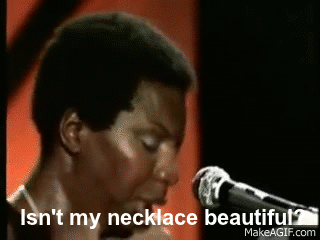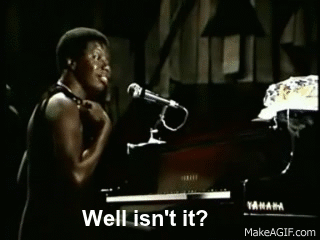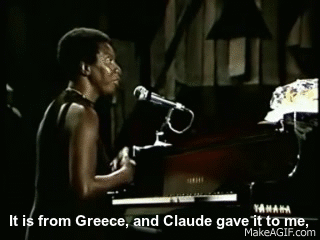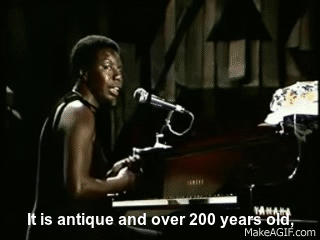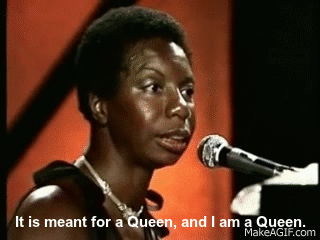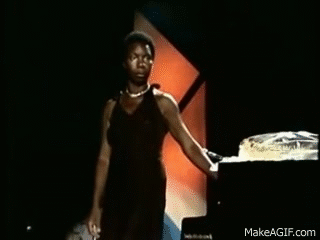Link
Devonté Hynes aka Blood Orange interviews Philip Glass
9 notes
·
View notes
Link
"Medieval Europe was diverse religiously, culturally, and ethnically, and medieval Europe was not the entire medieval world." 👏🏾ONE 👏🏾 MORE 👏🏾 TIME 👏🏾 FOR 👏🏾 THE 👏🏾PEOPLE 👏🏾 IN 👏🏾 THE 👏🏾 BACK
In light of the recent events in the United States, most recently the racist violence in Charlottesville, Virginia, the undersigned community of medievalists condemns the appropriation of any item or idea or material in the service of white supremacy. In addition, we condemn the abuse of colleagues, particularly colleagues of color, who have spoken publicly against this misuse of history.
As scholars of the medieval world we are disturbed by the use of a nostalgic but inaccurate myth of the Middle Ages by racist movements in the United States. By using imagined medieval symbols, or names drawn from medieval terminology, they create a fantasy of a pure, white Europe that bears no relationship to reality. This fantasy not only hurts people in the present, it also distorts the past. Medieval Europe was diverse religiously, culturally, and ethnically, and medieval Europe was not the entire medieval world. Scholars disagree about the motivations of the Crusades—or, indeed, whether the idea of “crusade” is a medieval one or came later—but it is clear that racial purity was not primary among them.
Contemporary white nationalists are not the first Americans to have turned nostalgic views of the medieval period to racist purposes. It is, in fact, deeply ironic that the Klan’s ideas of medieval knighthood were used to harass immigrants who practiced the forms of Christianity most directly connected with the medieval church. Institutions of scholarship must acknowledge their own participation in the creation of interpretations of the Middle Ages (and other periods) that served these narratives. Where we do find bigotry, intolerance, hate, and fear of “the other” in the past—and the Middle Ages certainly had their share—we must recognize it for what it is and read it in its context, rather than replicating it.
The medieval Christian culture of Europe is indeed a worthy object of study, in fact a necessary one. Medieval Studies must be broader than just Europe and just Christianity, however, because to limit our object of study in such a way gives an arbitrary and false picture of the past. We see a medieval world that was as varied as the modern one. It included horrific violence, some of it committed in the name of religion; it included feats of bravery, justice, harmony, and love, some of them also in the name of religion. It included movement of people, goods, and ideas over long distances and across geographical, linguistic, and religious boundaries. There is much to be learned from studying the period, whether we choose to focus on one community and text or on wider interactions. What we will not find is the origin of a pure and supreme white race.
Every generation of scholars creates its own interpretations of the past. Such interpretations must be judged by how well they explain the writings, art, and artifacts that have come down to us. As a field we are dedicated to scholarly inquiry. As the new semester approaches at many institutions, we invite those of you who have the opportunity to join us. Take a class or attend a public lecture on medieval history, literature, art, music. Learn about this vibrant and varied world, instead of simply being appalled by some racist caricature of it. See for yourself what lessons it holds for the modern world.
The Medieval Academy of America BABEL Working Group International Center for Medieval Art International Congress on Medieval Studies Sewanee Medieval Colloquium Society for the Study of Disability in the Middle Ages TEAMS: Teaching Association for Medieval Studies The Fellowship of Medievalists of Color The Gender and Medieval Studies Group The International Arthurian Society-North American Branch The International Association for Robin Hood Studies The International Piers Plowman Society The International Society of Anglo-Saxonists The International Society for the Study of Medievalism The John Gower Society The New Chaucer Society The Society for Medieval Feminist Scholarship
-The Medieval Academy Blog
3K notes
·
View notes
Text
Here’s your daily reminder that Beethoven was a POC
His mother was a “Moor”, a sect of African muslims who conquered parts of Europe. Descriptions of him by writers of the time include:
“His somewhat flat broad nose and rather wide mouth, his small piercing eyes and swarthy [dark] complexion” -Fanny Giannatasio del Rio
“His face reveals no trace of the German. He was so dark that people dubbed him Spagnol [dark-skinned]” -Emil Ludwig
Here is the most accurate picture we have of Beethoven:

821 notes
·
View notes
Photo
Happy Birthday Beethoven! 🎉🎉🎉

I’m convinced that Kayne is our Beethoven.
Both: -Generally known as assholes during their time. -Consistent output establishing them as musical geniuses. -Grumpy demeanor -Black as hell
304 notes
·
View notes
Audio
JACE CLAYTON aka DJ /rupture defies categorization. Not only is he an experimental DJ, he is a minimalist composer, ethnomusicologist, and a writer. His new book is called Uproot: Travels in 21st-Century Music and Digital Culture. It’s part memoir, part travelogue, and part music criticism. His writing on music has also appeared in the New York Times, The Washington Post and The Fader. His composition Room 21 will be performed at the Barnes Foundation Friday night. The piece uses the record collection of Dr. Albert C. Barnes and involves musicians from all over the world. This hour, producer Jon Ehrens talks with Clayton about the how he got started making music, what it means to be a DJ, and the music of the 21st century. via WHYY, Radio Times
#black composers#interval blog#whyy#jace clayton#dj rupture#composers#contemporary music#modern music#world music#electronica#classical music#dj
5 notes
·
View notes
Link
3 notes
·
View notes
Link
If you live in or near NYC, please consider attending The Dream Unfinished: Sing Her Name, this Wednesday, July 13. This concert and this cause are so important. It’s time for the classical music community to take a stand.
Tickets available here.
24 notes
·
View notes
Link
“The harmonies move a lot because I wanted things to be unsettled. I want the mood to be agitation and urgency��� The end will be a rallying call. The story of Sandra Bland is inconclusive. I didn’t want the piece to end triumphantly, because it isn’t triumphant." - composer and pianist Courtney Bryan
#BLM#black lives matter#classical music#jazz#piano#composer#new music#sandra bland#eric garner#interval blog
1 note
·
View note
Photo

Joseph Striplin: the Detroit Symphony Orchestra's first Black musician
(via Joseph Striplin: the Detroit Symphony Orchestra's first Black musician)
29 notes
·
View notes
Photo

Join Philadelphia Poet Laureate Yolanda Wisher and some of the city’s most dynamic literary organizations for an evening of poetry and performance. Visitors will explore the “City of Poetry,” with interactive workshops, pop-up poets, random acts of poetry, and games at poetry stations. Featuring performances by Yolanda Wisher and the Afroeaters, and the 2016 Philly Youth Poetry Movement (PYPM) team. Admission is Pay What You Wish after 5:00 p.m.
62 notes
·
View notes
Link
Damn Yuri, back at it again with the sexism...
Wow. This is very disappointing. I don’t like sexist conductors, but thats just my taste.
66 notes
·
View notes
Photo

Jesse Kovarsky, the actor who plays the title role in the Broadway revival of “Fiddler on the Roof,” and Kelly Hall-Tompkins, the actual violinist, at the Broadway Theater. For The New York Times.
32 notes
·
View notes
Photo

eighth blackbird’s Filament Attracts Grammy and MacArthur Awards http://ift.tt/1pIt1l8
4 notes
·
View notes
Link


1 note
·
View note






